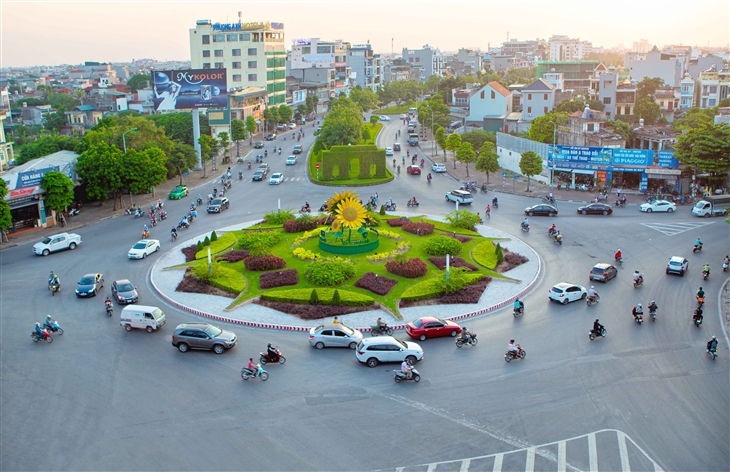Vietnam’s 2017 coffee exports may dip on low stock as uncertainty mounts
Wednesday, March 15,2017
AsemconnectVietnam - The coffee association Vicofa sees shipments fall 25-30 percent this year, after a record export volume last year.
Coffee exports from Vietnam, the world’s second-biggest producer after Brazil, may dip in the calendar year of 2017 due to thin carryover stocks while production of the next crop could be threatened by a lack of water, industry officials said.
A lower export volume from Vietnam, the largest producer of robusta beans, could tighten global supply of the bitter variety and inflate roasters’ production costs, given a deficit already projected for the ongoing 2016/2017 crop year ending in September. The world would face another coffee deficit this season, the third in a row, as production estimated at 151.62 million bags stays below consumption of 155 million bags, the International Coffee Organisation said in its February report. Each bag contains 60 kilograms of beans.
Unseasonal rain in late October and early November last year had delayed harvest of the current crop, traders said. Earlier in 2016, the worst drought in decades damaged some robusta plantations in the Central Highlands coffee belt but did not cut into overall output.
Growers often pick robusta cherries from late October to January. Rain in most of the October-December period of 2016 had not only slowed the process but also disrupted drying.
“The rain has caused early blossom in some areas and the flowers are often ruined during the first phase of watering,” Luong Van Tu, chair of the Vietnam Coffee and Cocoa Association (Vicofa), said Monday. Watering has now been under way in the region comprising five provinces.
While Vicofa has not made any output forecast for the next 2017/2018 crop, saying it was still too early, the losses of early flowers might lead to a smaller crop, Tu told VnExpress International.
He has been to Dak Lak Province in the Central Highlands over the weekend to attend a national coffee festival aimed at increasing sustainable production as well as boosting consumption of the beverage and promoting tourism to the region, which provides up to 90 percent of Vietnam’s total output.
Tu said Vietnam’s coffee exports this year could drop by around a quarter due to “very low stocks” brought forward from the previous season. He gave neither specific volume nor statistics for the stock.
The US Department of Agriculture (USDA) estimated Vietnam’s coffee stocks at the end of the previous season at 230,000 tonnes, or 3.83 million bags, down 40 percent from the previous season.
Vietnam exported a record 1.74 million tonnes between October 2015 and September 2016, based on Vietnam Customs data.
Exports in 2016/2017 are projected to fall around 12 percent to 1.56 million tonnes, the USDA said in its December 2016 coffee report.
Besides, higher domestic consumption and a rising export volume of finished coffee products would also reduce Vietnam’s export of semi-processed beans, industry officials said.
In 2016, Vietnam’s coffee shipments fetched $3.34 billion, with around 10 percent coming from finished products, Tu said.
Vietnam has one of the world’s fastest growing retail coffee markets, trailing only behind Indonesia, Turkey and India, global market intelligence Mintel said earlier this month.
Water
At a seminar on Sunday in Buon Ma Thuot, the capital city of Dak Lak, Vietnamese industry officials discussed ways to cope with climate change and ensure sustainable coffee production.
Climate change, with falling rainfall in recent years, and a third of the region’s coffee trees being old have reduced yields, the Dak Lak government said in a statement late Sunday. Dak Lak is Vietnam’s largest coffee planting province, producing a third of the country’s total output.
Rainfall in March, the peak of the six-month dry season, is forecast to be similar to the average level in recent years in Dak Lak and also in Lam Dong Province, Vietnam’s second-biggest grower, the region’s weather station said. The wet season often returns in early May.
“Underground water is uneven this year, with some places reporting the water could recede 1.5 to two meters (5-6.6 feet) below last year’s level,” Tu said. The problem has emerged in all but the eastern part of the Central Highlands where rain has been sufficient, he said.
Ample supply of underground water will ensure success for the third phase of tree watering, while water shortages often lead to smaller cherries, affecting overall yields and output.
Traders said output forecasts made around Jun/July would provide more precise figures, after the rainy season returns.
Source: Intellasia.net
Nearly 600 million USD disbursed in support of agroforestry, aquatic sectors
Squid and octopus exports are expected to decrease by 2% in the first quarter of 2024
Vietnam’s imports of raw materials for animal feed production in March and first 3 months of 2024
US dollar continues gaining against Vietnamese dong, hitting exchange ceiling
Real estate market thrives, entities ready to re-enter market
DAILY: Vietnamese pepper prices increased by 1000 VND on April 16, 2024
DAILY: Vietnamese coffee prices increased by 1000 VND on April 16, 2024
In the first quarter of 2024, fertilizer exports increased sharply over the same period
Central bank to resume gold bar bidding after 11 years
Garment & textile sector tries to keep growth momentum
Vietnam - Malaysia trade exchange in first quarter of 2024
In the first quarter of 2024, cashew exports earned about 782 million USD
Setting a new record, the fruit and vegetable industry grew in difficulty
Potential for exporting industrial goods to Algeria and notes

Plan of Hai Duong province for a period of 2021 - 2030, ...
Organize space reasonably and harmoniously, focusing on connecting Hai Duong in common development space, actively contributing to the ...Plan of Hau Giang province in a period of 2021 - 2030, ...
Sustainable forestry development program in a period of ...

12th-century ancient road unearthed at My Son Sanctuary
An ancient road dating back to the 12th century has freshly been discovered in an excavation on architectural ruins at the east side of ...Efforts made to seek UNESCO’s recognition for Con Moong ...
Vietnam Art Photo Contest and Exhibition 2024 to be held ...
Bas-relief featuring talks between Uncle Ho and soldiers ...



